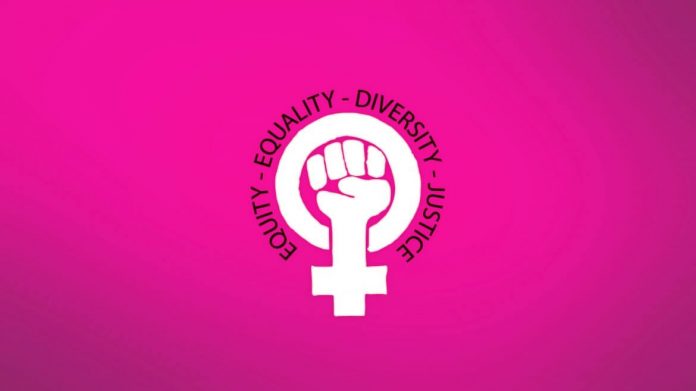This article has been written by Rupsa Chattopadhyay pursuing Certificate Course in Introduction to Legal Drafting: Contracts, Petitions, Opinions & Articles and edited by Shashwat Kaushik.
This article has been published by Sneha Mahawar.
Table of Contents
Introduction
Gender justice is the right of every person in this world. Gender justice is a basic human right for all individuals. Every individual deserves to be treated with respect and dignity, irrespective of their gender.
Feminism is equality and equal rights for all genders. This means equal treatment for men, women and people of other genders, like non-binary, agender, and transgender people. To provide for equal rights for women and remove the disadvantages faced by them in various spheres of existence to bring them to par with men. The rights of other gender identities also come within their sphere and are being discussed.
Historical background of feminism
Historically, the existence of other genders has not always been formally acknowledged. However, it has been seen that women face certain specific kinds of disadvantages that men do not face. Hence, in the initial years, feminism traditionally catered to women and their empowerment. Feminism is often described as an economic, political, and cultural movement that aims to establish equal rights and legal practises for women ‘s rights and well-being.
Dr. Laura Robert, a Gender Studies professor, says, “Feminism is a political movement against sexism.” It basically tries to create a more inclusive and equal world for all. At the present stage, though women face some specific disadvantages and difficulties, the scope of feminism has expanded to provide equal treatment for all, irrespective of gender.
There are different strands of feminism. All strands of feminism believe that the difference between men and women is not due to biological factors but to social and cultural differences in the ways in which men and women are treated.
Feminism through the ages
Feminism advanced through the ages in the form of waves. The different waves of feminism can be understood as:
First wave of feminism
This wave of feminism occurred simultaneously with the Industrial Revolution. The first wave of feminism mainly concerned itself with women’ s voting rights and the women’s suffrage movement. It also involved other aspects, like:-
- Right to good education
- Right to property
- Right to earn wages
- Right to be recognised as a separate entity
- Right to bodily autonomy
In the first wave of feminism, there was a struggle for the very legal identity of women.
The doctrine of coverture states that by marriage, the husband and wife are one person in the eyes of the law. The legal existence of a woman is suspended after marriage or at least is incorporated and consolidated into that of the husband. Thus, women ceased to exist after marriage in many ways This wave of feminism was largely dominated by upper-class, cis-gendered white women. By 1919, by virtue of the 19th Amendment of the Constitution of the United States, women had acquired the right to vote. The right to vote granted a form of identity to women
Second-wave feminism
The second wave campaigned for basic social and legal rights for women. During this time, there was an abysmal condition among women.
Job segregation of the genders was common. In the advertisement column of the newspaper, there were separate openings for men and women. Women were fired from jobs when they got pregnant. Besides, there was no protection from sexual harassment. This created an impediment to the participation of women in the workplace.
Third-wave feminism
It is the continuation of and an attempt at rectifying the failures of the second wave. This wave was less characterised by a specific political agenda but was governed by a general ideology. The third wave of feminism witnessed the emergence of new ideas of feminism like intersectionality, vegetarianism, transfeminism and post-modern feminism.
The biggest challenge of the third wave of feminism is to emphasise the importance of feminism as well as to ensure that the gains of the second wave of feminism are not taken for granted. This wave of feminism attempted to bring light to the fact that women of the generation were still affected by patriarchy.
Fourth-wave feminism
The fourth wave of feminism is concerned with breaking down boundaries and subverting oppressive power structures.
In this wave of feminism, there is a heavy use of the Internet to call out misogyny in culture and politics. The #MeToo movement was created as women on a large scale called out unacceptable behaviour like sexual harassment by powerful icons. The #MeToo movement was controversial and there were two sides to it. On one side, perpetrators of women-specific crimes learned that they would not get away with their predatory behaviour simply because of their power. On the other hand, the reputation of innocent men was ruined because of false allegations from women.
The #MeToo movement gave feminism a bad reputation because of the false allegations. Several women began to disassociate from the label of feminism.
The major aspect of this wave of feminism is that gender identity and sex positivity were embraced. The fourth wave of feminism was inclusive of other gender identities. There was greater inclusivity compared to the other waves of feminism. Several amendments in criminal law have been made in India.
Impact on criminal laws
With the increase in violent crimes against women, the safety of women is also a major concern of the fourth wave of feminism. Several amendments were made in response to such violent crimes.
The Criminal Law (Amendment) Act, 2013 was passed in response to the Nirbhaya rape case. The said amendment made several changes to the Indian Penal Code of 1860, the Code of Criminal Procedure of 1973 and the Indian Evidence Act of 1872. Notably, new crimes were introduced under Section 354 of the Indian Penal Code, 1860. Section 354A of the IPC punishes sexual harassment with rigorous imprisonment for a maximum period of 3 years. Section 354B of the IPC makes acts of assault or criminal force with the intention of disrobing a woman an offence punishable with imprisonment for a maximum term of 7 years and a fine. Section 354C of the IPC makes voyeurism or the act of viewing a woman engaged in private moments, a punishable offence. Section 354D of the IPC punishes the act of stalking a woman, whether through electrical means or physical means.
Similarly, the Criminal Law (Amendment) Act, 2018 was passed in response to the Kathua rape case. Several changes were made in the Indian Penal Code, the Code of Criminal Procedure, the Indian Evidence Act and the Protection of Children from Sexual Offences Act. The said Act changed the maximum punishment for rape from seven years to ten years. The punishment for rape for girls below 16 years of age ranges from a term of 20 years to life
imprisonment. Similarly, the rape of a girl under 12 years has been changed from a maximum term of 20 years to life imprisonment.
The Protection of Women from Sexual Offences Act of 2012 was also introduced. It went a long way towards ensuring the well-being of working women.
The changes made to the existing criminal laws showed that the issues affecting women were being taken seriously. Victim blaming had reduced significantly and the culprits were held accountable.
Issues of LGBTQ+
In the case of National Legal Services Authority vs. Union of India and Ors. (2014), the issue of legal identity and the rights of transgender people were considered. In this landmark judgement, the Supreme Court held that transgender people were to be considered the third gender. The Apex Court further held that a transgender person is entitled to the rights granted by the Constitution, including the fundamental rights granted under Part III of the Constitution.
The Court also declared that transgender people fall under the category of third gender. They are to be granted complete legal identity. Hence, they are to be given education and health care without any form of discrimination.
In 2018, the Supreme Court passed a landmark judgement for the LGBTQ+ community. In Navtej Singh Johar vs. Union of India Ministry of Law And…..(2018), the Supreme Court partially decriminalised Section 377 of the Indian Penal Code. Consensual sexual acts between adults were declared legal even if they were between persons of the same sex. This judgement went a long way granting equal rights to sexual minorities.
In Supriyo @ Supriya Charkaborty vs. Union of India (2023), the Apex Court of India refused to grant legal recognition to same sex marriage, stating that it was out of the ambit of its power. Only Parliament and state legislatures can reliably grant such legal recognition. This was a unanimous verdict of the Constitution Bench, composed of five judges- the Chief Justice of India, Justice DY Chandrachud and Judges Sanjay KIshan Kaul, S Ravindra Bhat, Hima Kohli and PS Narasimha. The judges held that they could not change the Special Marriage Act of 1954 to include homosexual couples within the ambit of marriage. However, queer couples have the right to cohabit.
Though this may appear to be a setback in the rights of same sex marriage, it started the conversations on the subject of same sex marriage.
Misconceptions about feminism
There are various misconceptions surrounding feminism. Due to such misconceptions, several celebrities distance themselves from the label “feminist.”
The term “feminist” is often misunderstood and misrepresented. Many people believe that feminists are angry women who hate men, or that they believe women are superior to men. However, this is not true. Feminism is simply the belief that women should have the same rights and opportunities as men.
Feminism is a movement that has been fighting for gender equality for centuries. It was born out of the need to address the injustices and inequalities that women faced in society. In the early days of feminism, women were fighting for the right to vote, to own property, and to have access to education. Today, feminists are still fighting for these same basic rights, as well as for other issues such as equal pay, reproductive rights, and an end to violence against women.
Feminism is not about female dominance. It is about equality. Feminists believe that all people, regardless of their gender, should be treated with respect and have the same opportunities. They believe that women should not be held back by social or cultural norms and that they should be able to reach their full potential.
Feminism is a positive movement that is working to make the world a better place for everyone. It is a movement that is about equality, not dominance. If you believe in equality, then you are a feminist.
Conclusion
Feminism is an ideology that deals with the rights of different genders and sexualities. There have been different waves of feminism that deal with various issues. In the initial years, feminism dealt with the issues of women primarily. Currently, feminism is concerned with the equality of all genders.
Feminism is the belief in social, political, and economic equality between the sexes. It has been a driving force for progress for women for centuries and has helped to achieve many important milestones, such as the right to vote, the right to own property, and the right to equal pay for equal work. However, there is still much work to be done. Women continue to face discrimination in many areas of life, such as the workplace, the media, and the criminal justice system. Feminism is still needed to address these issues and create a more equitable world for women.
One of the most important things to understand about feminism is that it is not about hating men. Feminism is about equality for all genders, and it recognises that the patriarchy hurts men as well as women. For example, the traditional gender roles that are enforced by the patriarchy can be harmful to men by limiting their opportunities and making it difficult for them to express their emotions. Feminism seeks to break down these harmful gender roles and create a more egalitarian society where everyone can thrive.
Another important misconception about feminism is that it is only for women. In fact, feminism is for everyone. Men can be feminists too, and in fact, many men are active in the feminist movement. Feminism is about creating a more just and equitable world for everyone, regardless of gender. Men as well as persons of other genders need feminism as much as women do.
Feminism is still needed because there is still much work to be done to achieve gender equality. Women continue to face discrimination in many areas of life, and feminism is the only movement that is working to address these issues. If you believe in equality for all genders, then you are a feminist.
References
- https://oneindiaonepeople.com/fake-metoo-claims-defeat-real-cause/
- https://www.hindustantimes.com/india-news/supreme-court-declines-legal-recognition-to-same-sex-marriage-101697528920658.html
- https://www.law.cornell.edu/women-and-justice/resource/the_criminal_law_(amendment)_act_2018
- https://www.coe.int/en/web/gender-matters/feminism-and-women-s-rights-movements
- https://abcnews.go.com/US/examining-modern-feminism-wave-now/story?id=97617121
- https://www.history.com/topics/womens-history/feminism-womens-history
- https://study.com/academy/lesson/advancement-for-women-education-employment-rights.html
Students of Lawsikho courses regularly produce writing assignments and work on practical exercises as a part of their coursework and develop themselves in real-life practical skills.
LawSikho has created a telegram group for exchanging legal knowledge, referrals, and various opportunities. You can click on this link and join:
Follow us on Instagram and subscribe to our YouTube channel for more amazing legal content.
 Serato DJ Crack 2025Serato DJ PRO Crack
Serato DJ Crack 2025Serato DJ PRO Crack











 Allow notifications
Allow notifications



